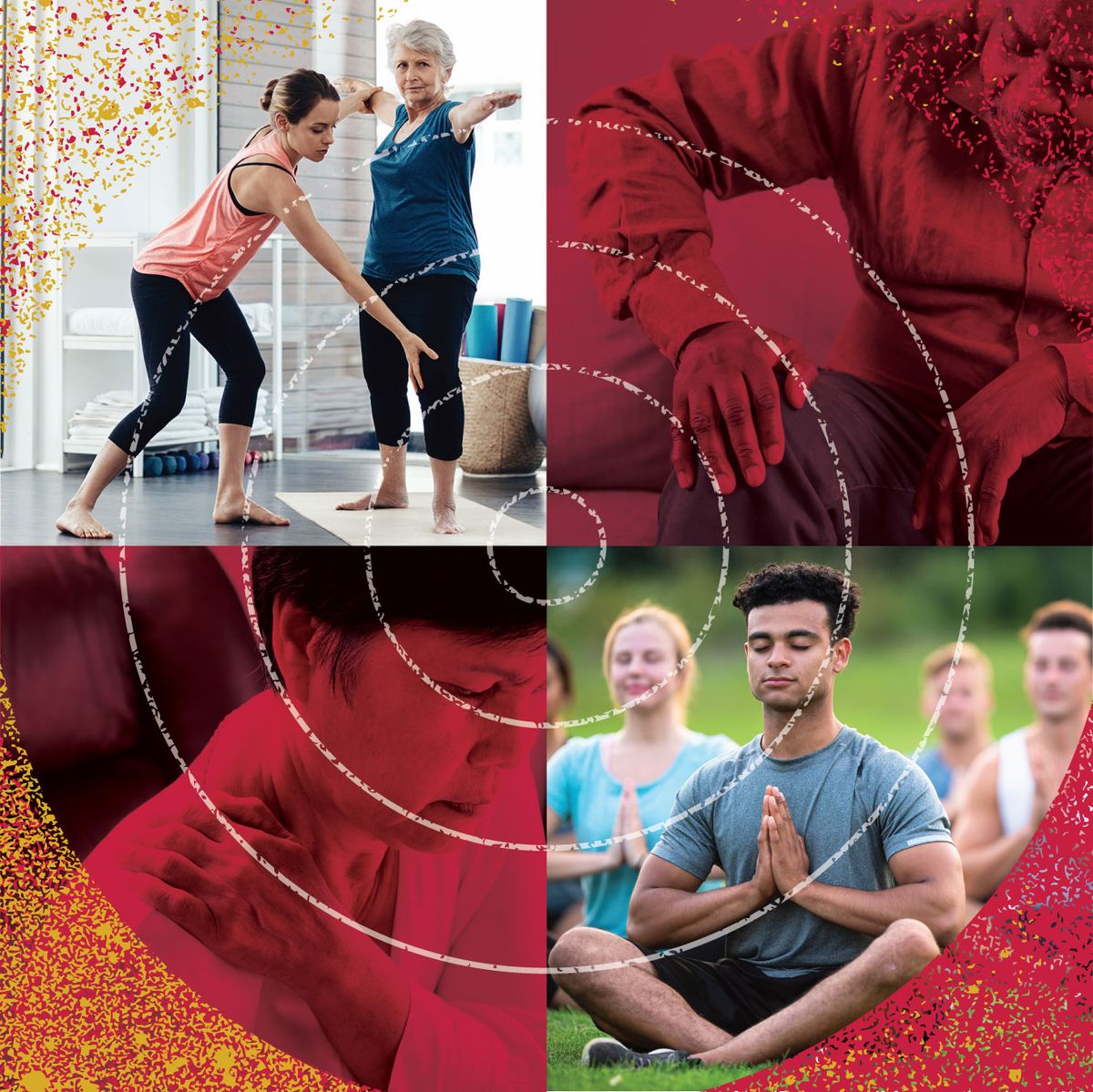Complementary Health Approaches for Chronic Pain

This issue of the digest summarizes current scientific evidence about the complementary health approaches most often used by people for chronic pain, including fibromyalgia, headache, irritable bowel syndrome, low-back pain, neck pain, osteoarthritis, rheumatoid arthritis, and cancer pain.
The scientific evidence to date suggests that some complementary health approaches may provide modest effects that may help individuals manage the day-to-day variations in their chronic pain symptoms. While some complementary approaches do show modest benefit, the amount and quality of evidence varies depending on the approach and pain condition.
What the Science Says:
Complementary Health Approaches for Chronic Pain
Pain Conditions and Summary of Current Research
Fibromyalgia
In general, research on complementary health approaches for fibromyalgia must be regarded as preliminary. However, recent systematic reviews and randomized clinical trials provide encouraging evidence that practices such as tai chi, qigong, yoga, massage therapy, acupuncture, and balneotherapy may help relieve some fibromyalgia symptoms.
Headache
Several dietary supplements, including riboflavin, coenzyme Q10, and the herbs butterbur and feverfew, have been studied for migraine, with some promising results in preliminary studies.
Results of research on mind and body practices such as relaxation training, biofeedback, acupuncture, and spinal manipulation for headaches suggests that these approaches may help relieve headaches and may be helpful for migraines.
Irritable Bowel Syndrome
Systematic reviews evaluating complementary modalities for IBS symptoms have concluded that few large, well-designed studies exist, and further research is required to determine whether complementary or integrative health practices are effective for treating IBS.
Low-Back Pain
There’s low- or moderate-quality evidence that a variety of mind and body practices, including acupuncture, electromyography biofeedback, low-level laser therapy, mindfulness-based stress reduction, progressive muscle relaxation, spinal manipulation, tai chi, and yoga, may be helpful for chronic low-back pain.
There’s low-quality evidence that acupuncture, massage therapy, and spinal manipulation may be helpful for acute low-back pain.
Preparations of the herb cayenne, used topically, may help to relieve low-back pain.
Neck Pain
Available evidence suggests that acupuncture for neck pain may provide better pain relief compared to no treatment. There is some evidence that spinal manipulation may help relieve neck pain, but much of the research has been of low quality. The evidence that massage can relieve neck pain is based on several small studies of poor quality and a 2013 systematic review.
Osteoarthritis
Clinical practice guidelines issued by the American College of Rheumatology strongly recommend aerobic exercise and/or strength training, weight loss (if overweight), tai chi, and a number of pharmacologic and nonpharmacologic modalities for treating osteoarthritis (OA) of the knee, hip, or hand. The guidelines conditionally recommend balance exercises, yoga, acupuncture, and other nondrug approaches such as self-management programs and walking aids, for managing knee OA.
Rheumatoid Arthritis
Results from clinical trials suggest that some mind and body practices—such as relaxation, mindfulness meditation, tai chi, and yoga—may be beneficial additions to conventional treatment plans for rheumatoid arthritis (RA), but some studies indicate that these practices may do more to improve other aspects of patients’ health than to relieve pain.
Omega-3 fatty acids found in fish oil may have modest benefits in relieving RA symptoms; however, omega-3s do not prevent ongoing joint damage or modify disease course. No other dietary supplement has shown clear benefits for RA, but there is preliminary evidence for a few, particularly fish oil, gamma-linolenic acid, and the herb thunder god vine. Serious safety concerns have been raised about thunder god vine.
Cancer Pain
Clinical guidelines issued by the Society for Integrative Oncology and the American Society of Clinical Oncology (ASCO) in 2022 found intermediate level of evidence (with moderate strength) to recommend that acupuncture, reflexology, acupressure, hypnosis, or massage may help relieve pain in people with cancer.
The quality of evidence for other mind and body interventions or natural products for pain in people with cancer is either low or inconclusive.
Clinical Guidelines
- Noninvasive Treatments for Acute, Subacute, and Chronic Low Back Pain: A Clinical Practice Guideline (Annals of Internal Medicine)
- Practice Guidelines for Chronic Pain Management (Anesthesiology) [699 KB PDF]
- Treatment of Osteoarthritis of the Knee (American Academy of Orthopaedic Surgeons)
- Chiropractic Management of Fibromyalgia Syndrome: Summary of Clinical Practice Recommendations (Council on Chiropractic Guidelines and Practice Parameters) [21 KB PDF]
- Low Back Pain: Clinical Practice Guidelines Linked to the International Classification of Functioning, Disability, and Health (Journal of Orthopaedic and Sports Physical Therapy)
- Nonpharmacologic and Pharmacologic Therapies for Osteoarthritis of the Hand, Hip, and Knee (American College of Rheumatology/Arthritis Foundation)
- Migraine Headaches in Children and Adolescents (Journal of Pediatric Health Care)
Information for Your Patients
- 9 Things You Should Know About Chronic Pain and Complementary Health Approaches
- Rheumatoid Arthritis: In Depth
- Osteoarthritis: In Depth
- Massage Therapy: What You Need To Know
- Headaches: What You Need To Know
- Fibromyalgia: In Depth
- Spinal Manipulation: What You Need To Know
- Chronic Pain and Complementary Health Approaches
- Complementary Health Practices for U.S. Military, Veterans, and Families
NCCIH Clinical Digest is a service of the National Center for Complementary and Integrative Health, NIH, DHHS. NCCIH Clinical Digest, a monthly e-newsletter, offers evidence-based information on complementary health approaches, including scientific literature searches, summaries of NCCIH-funded research, fact sheets for patients, and more.
The National Center for Complementary and Integrative Health is dedicated to exploring complementary health products and practices in the context of rigorous science, training complementary health researchers, and disseminating authoritative information to the public and professionals. For additional information, call NCCIH’s Clearinghouse toll-free at 1-888-644-6226, or visit the NCCIH website at nccih.nih.gov. NCCIH is 1 of 27 institutes and centers at the National Institutes of Health, the Federal focal point for medical research in the United States.
Copyright
Content is in the public domain and may be reprinted, except if marked as copyrighted (©). Please credit the National Center for Complementary and Integrative Health as the source. All copyrighted material is the property of its respective owners and may not be reprinted without their permission.